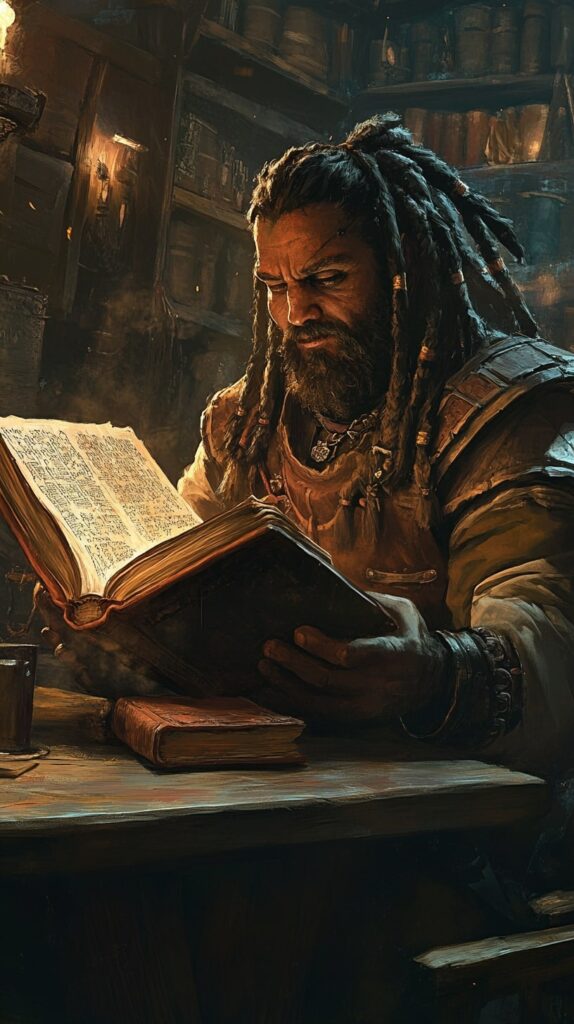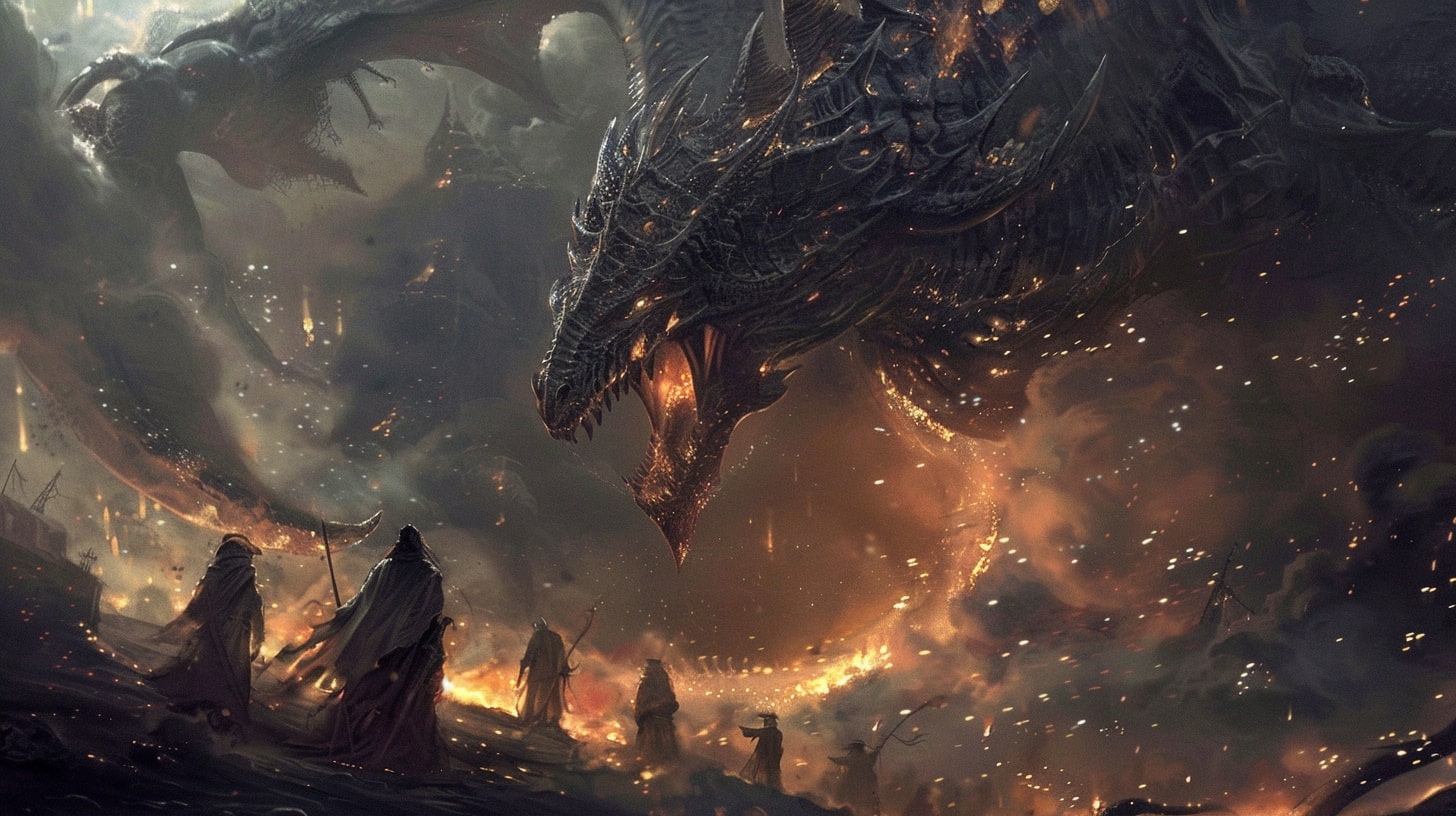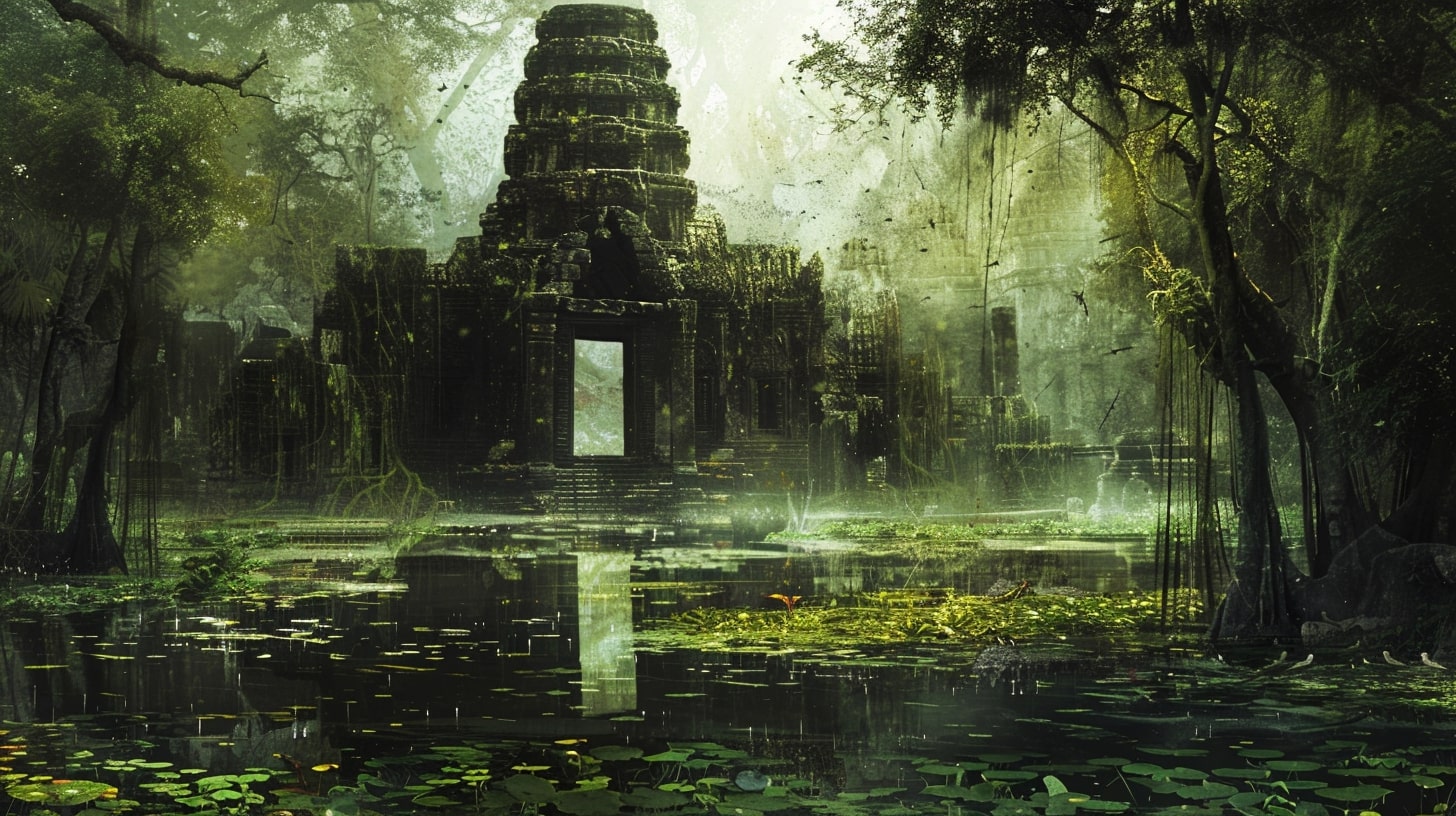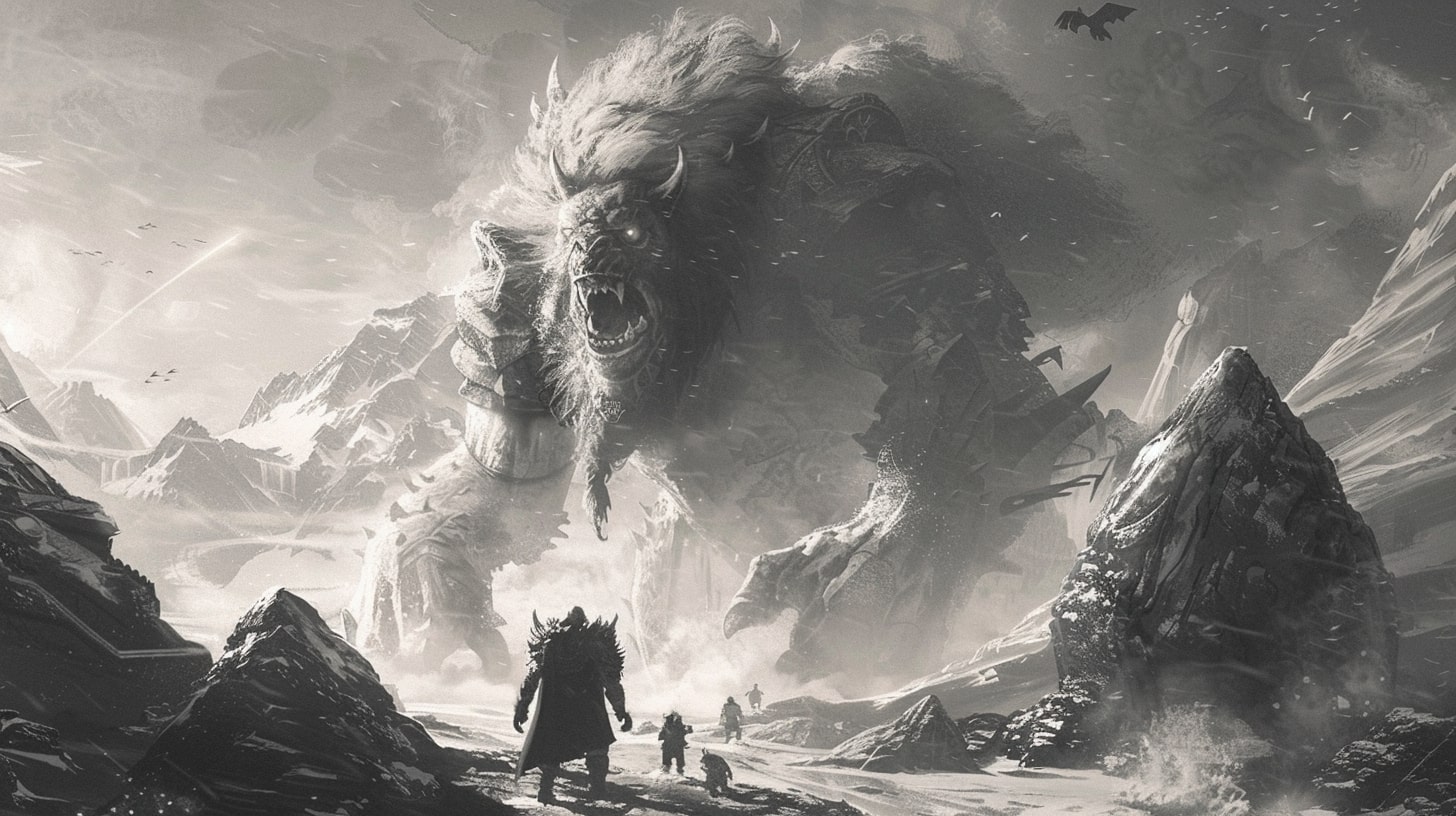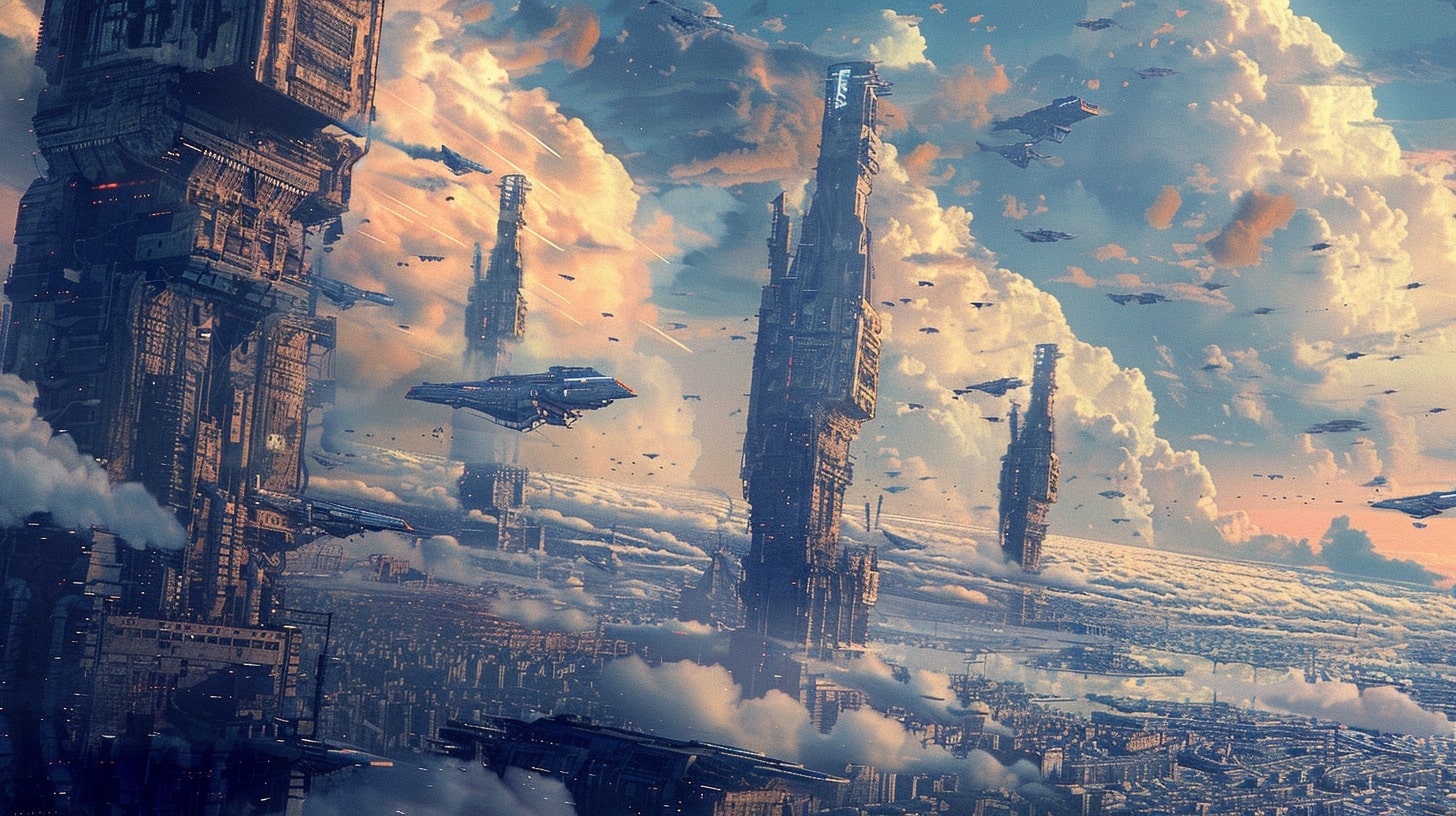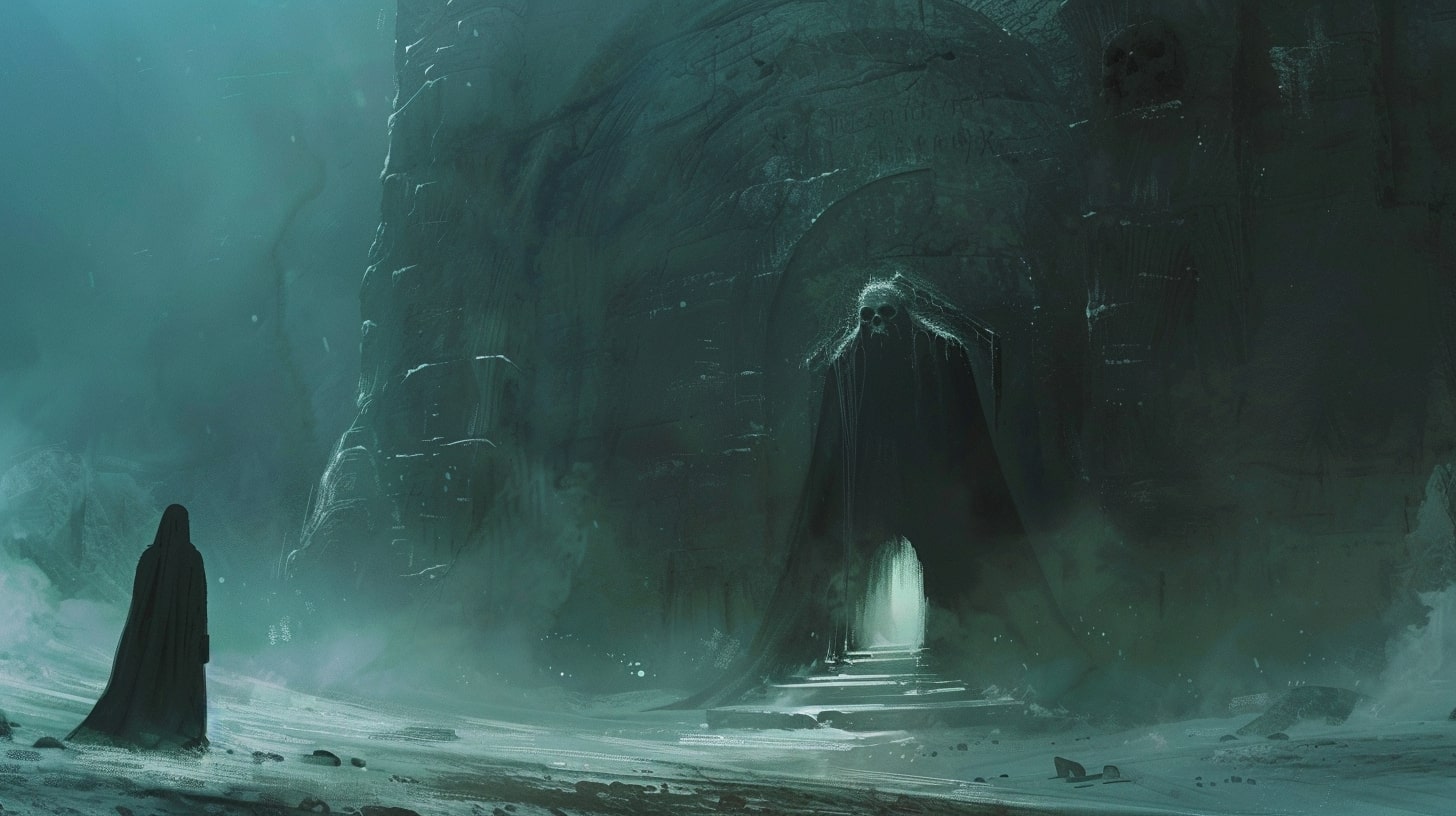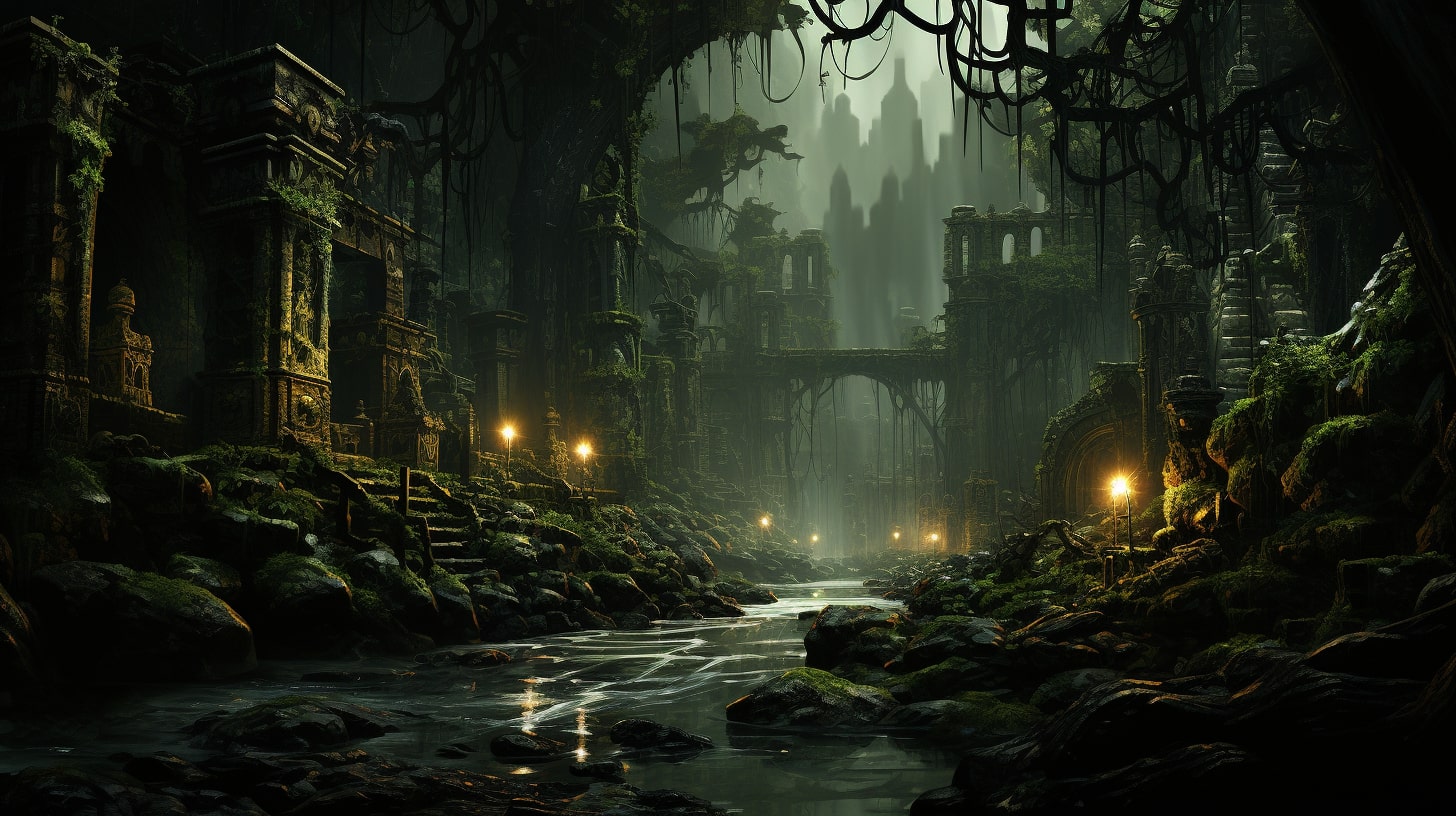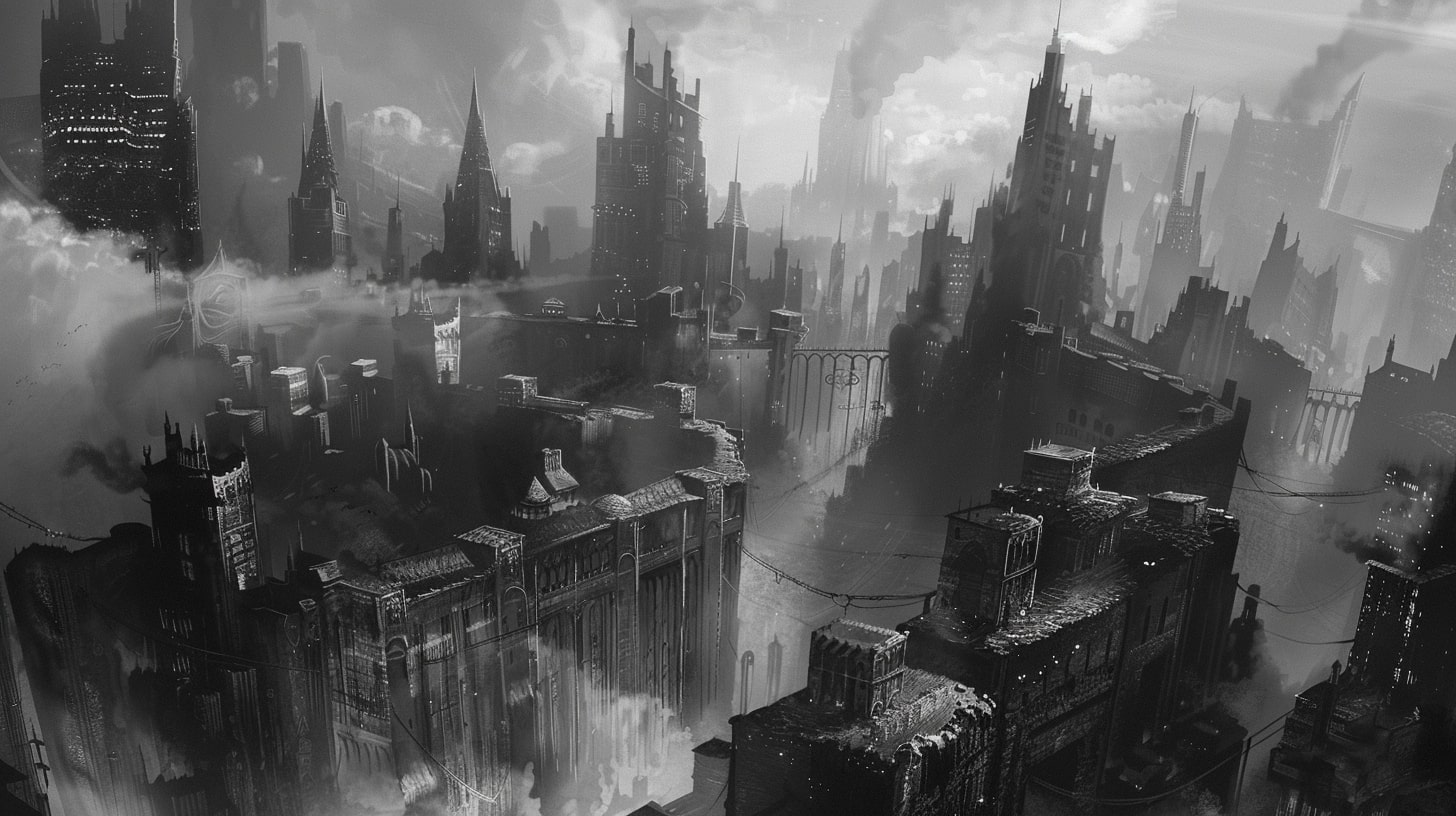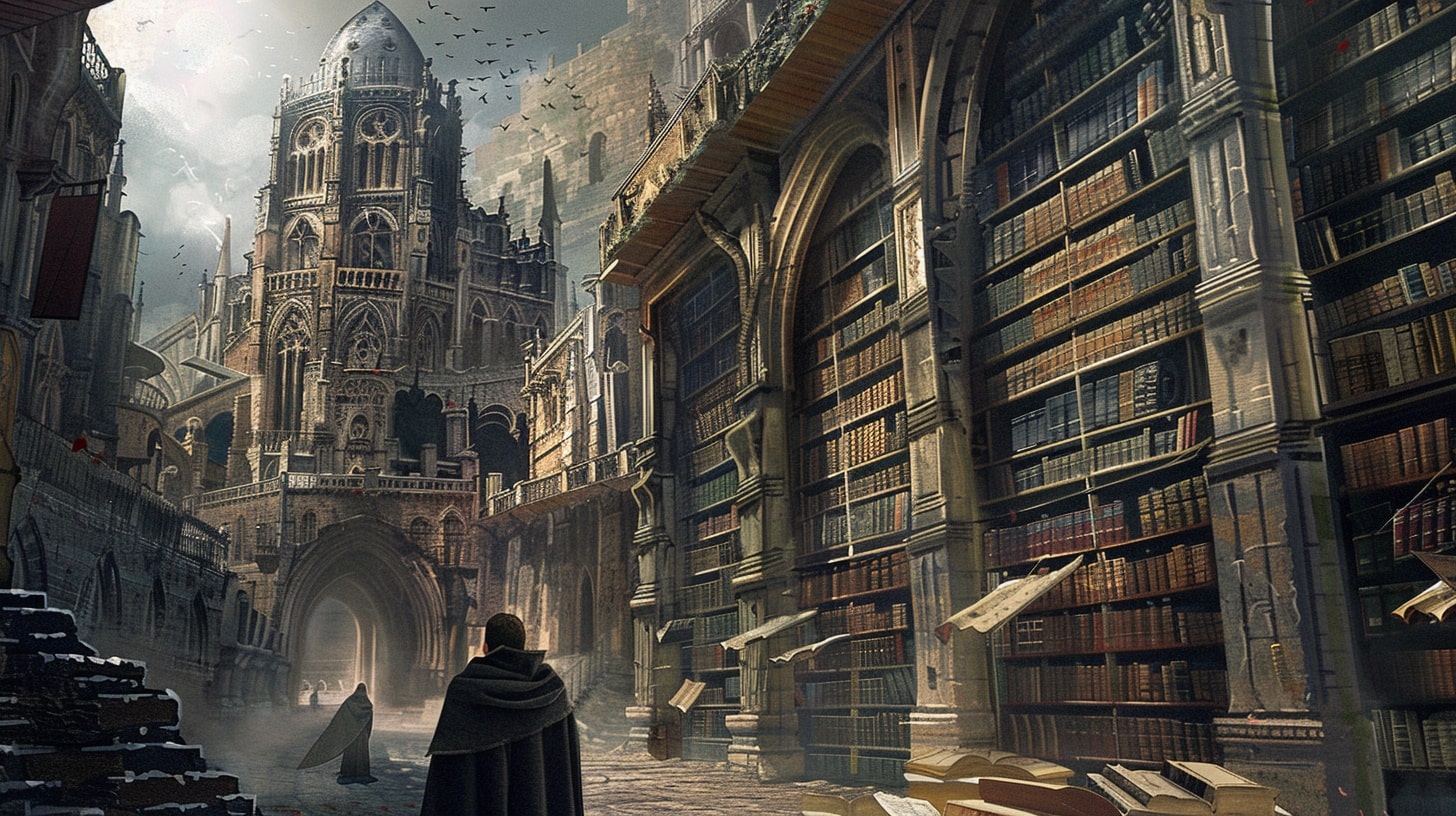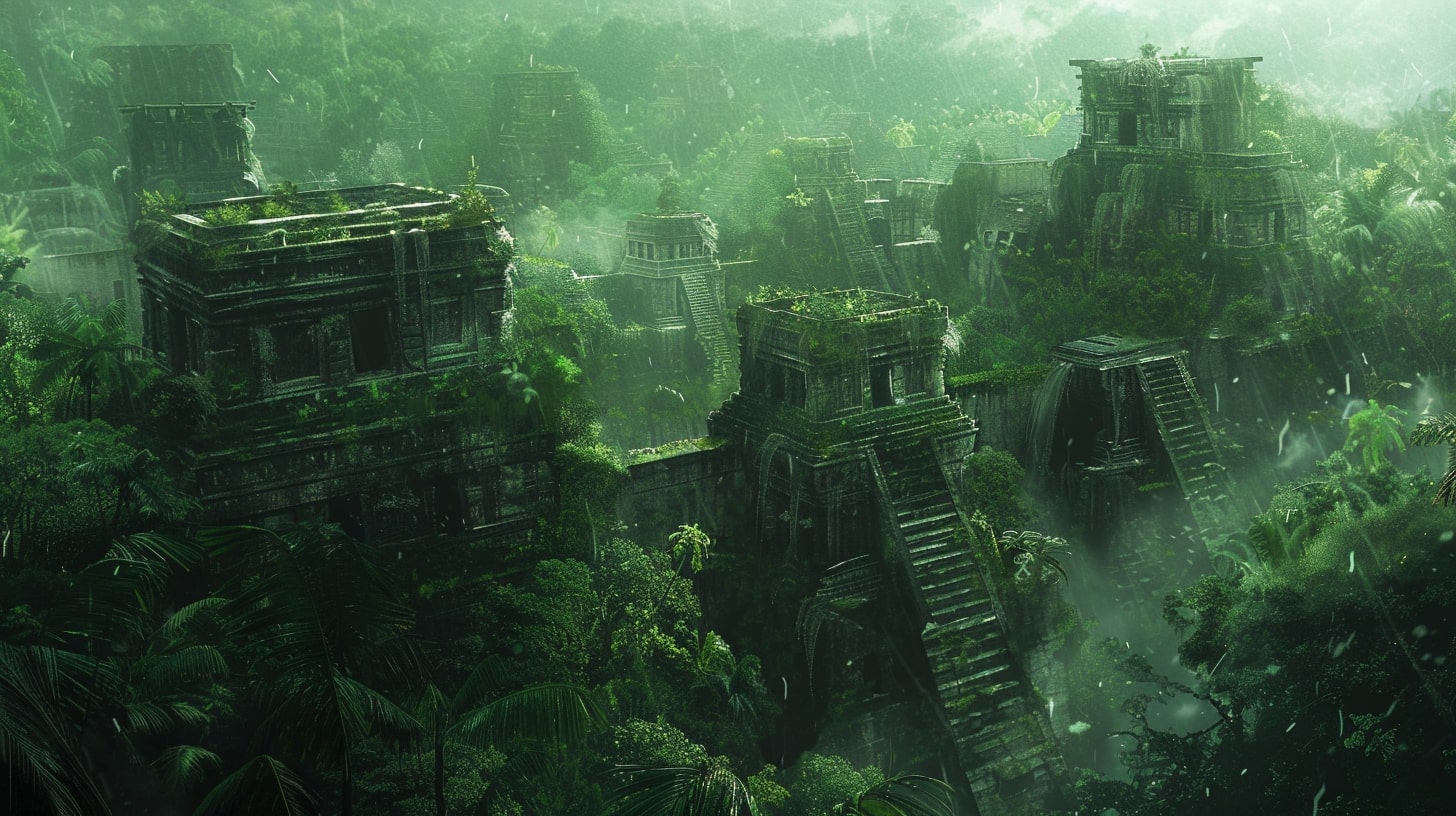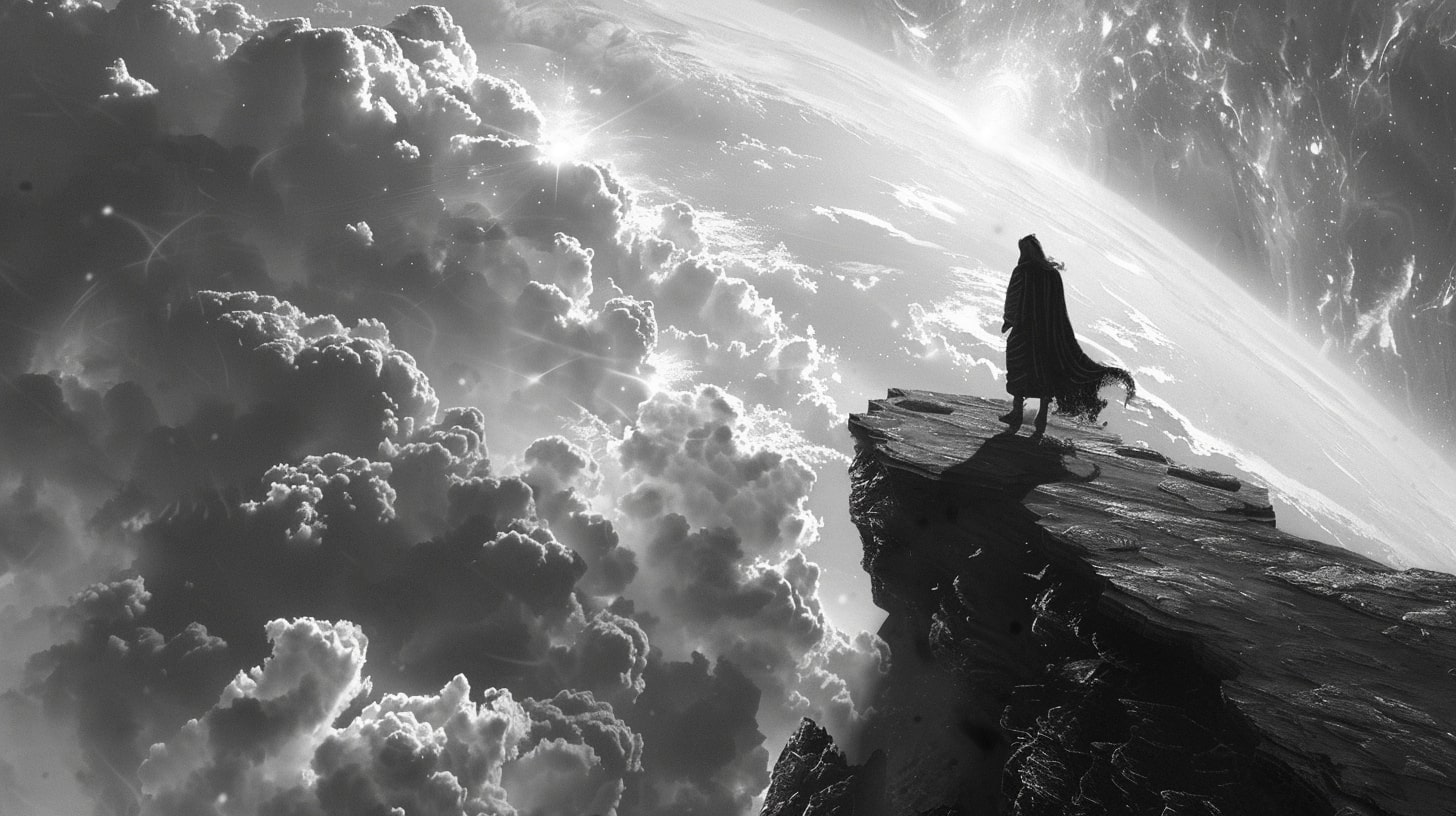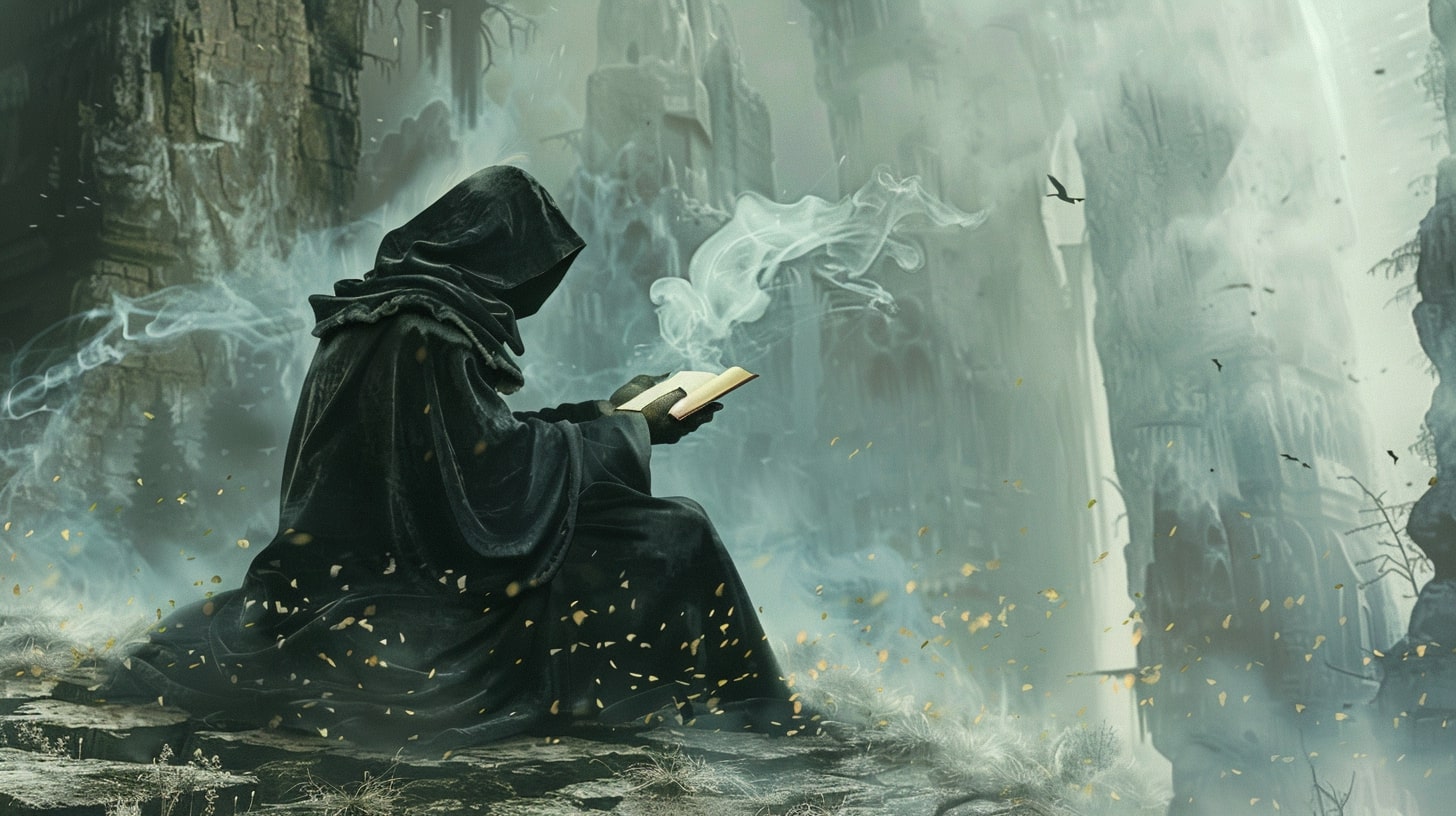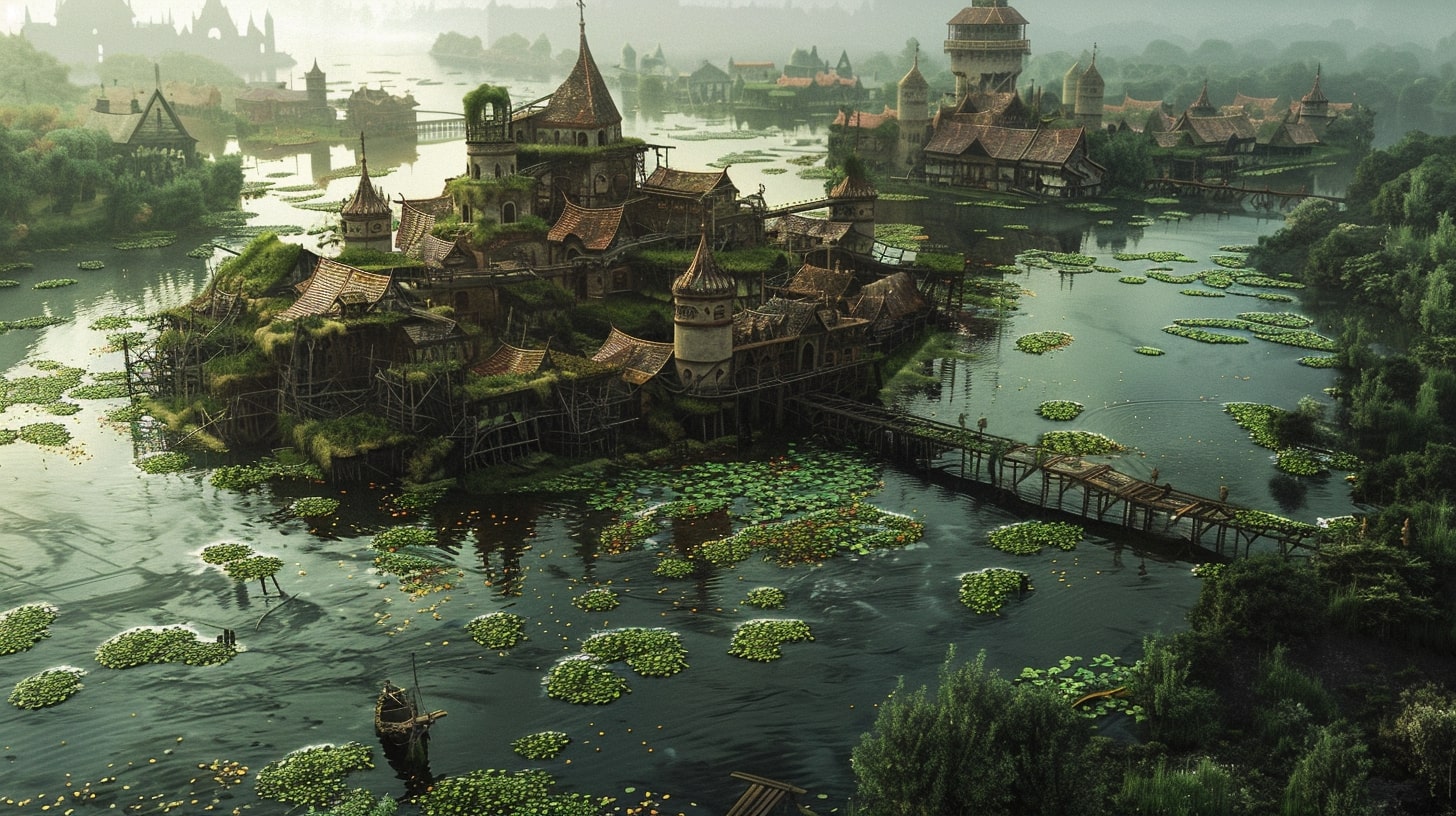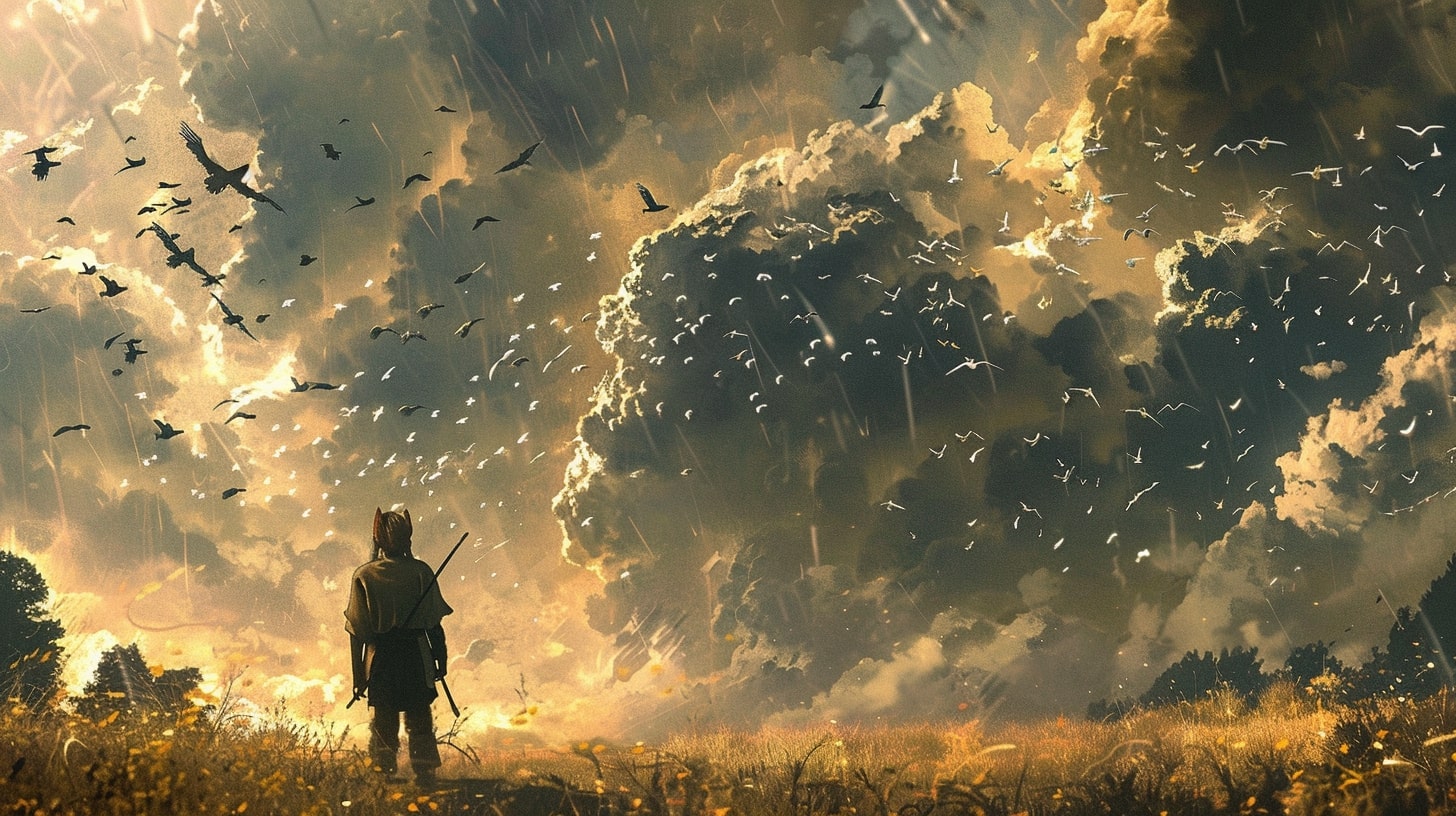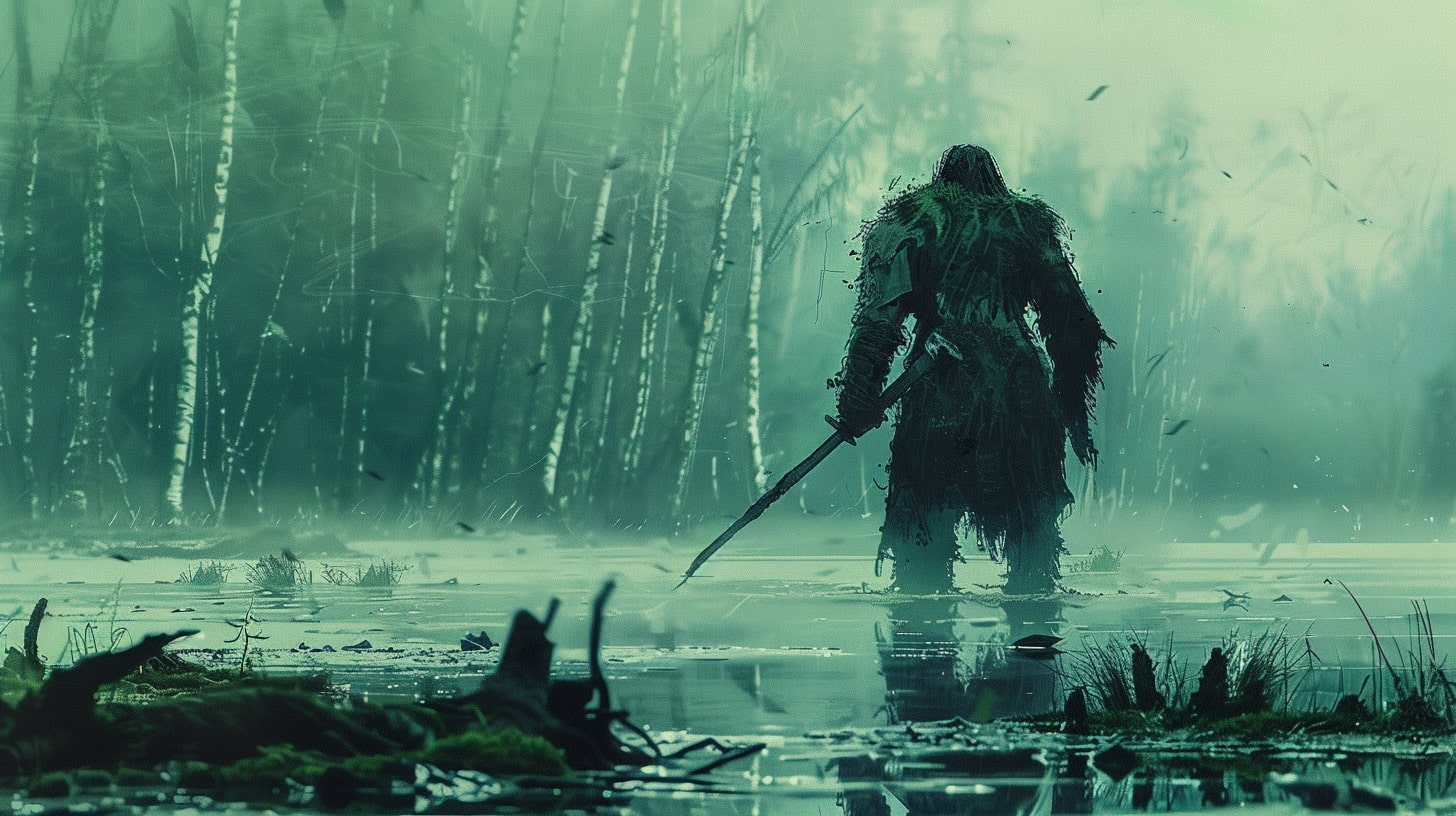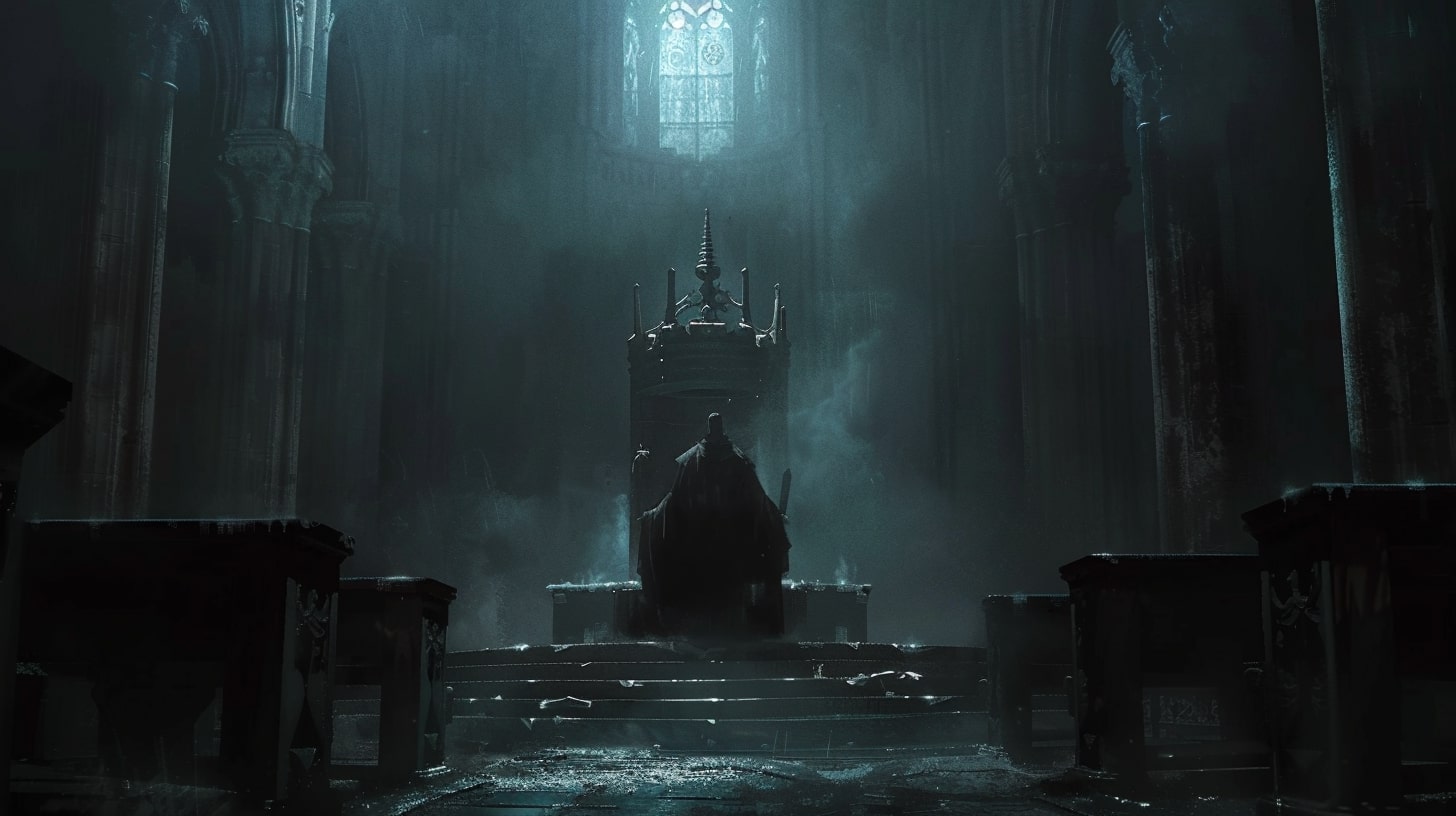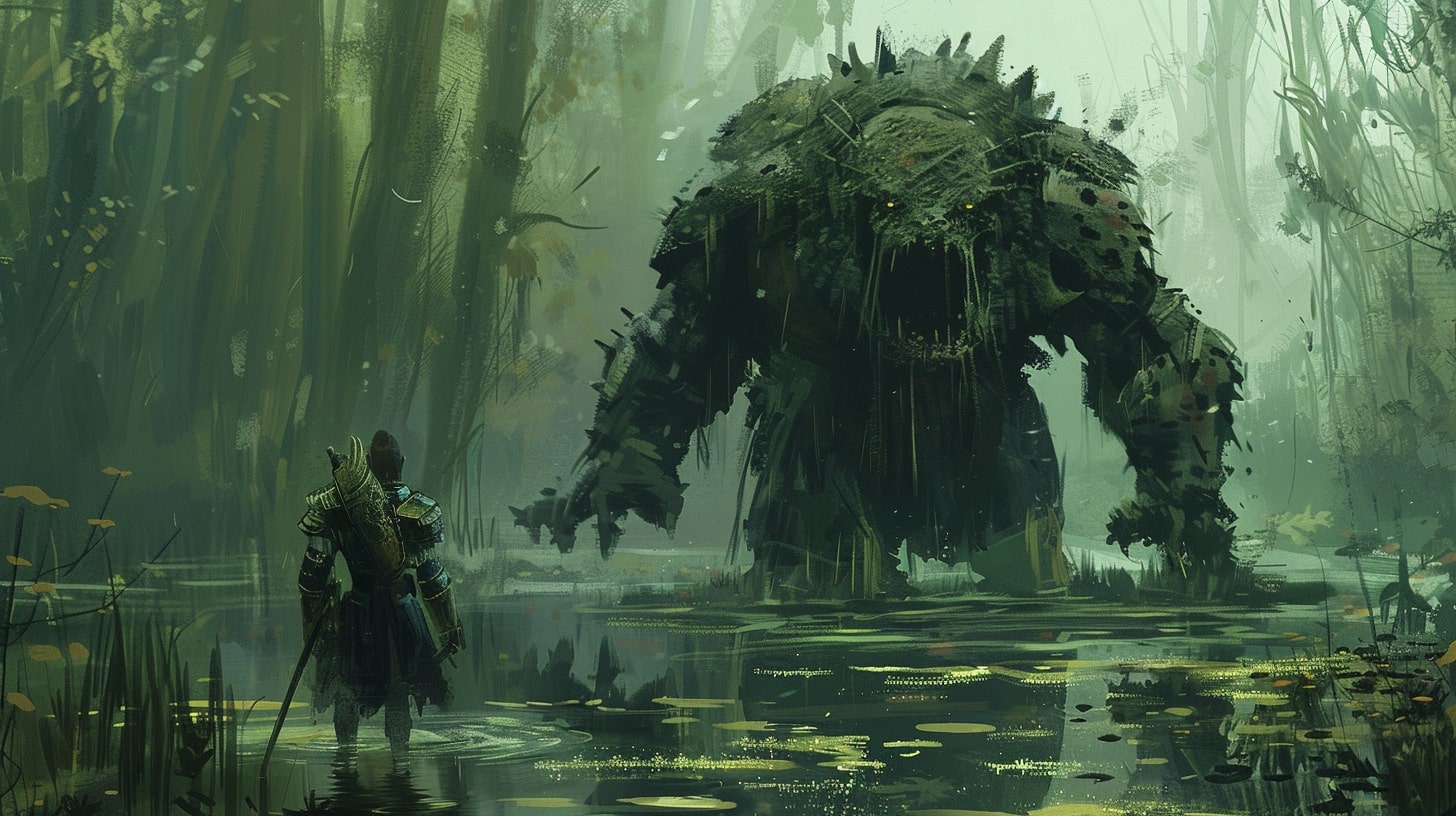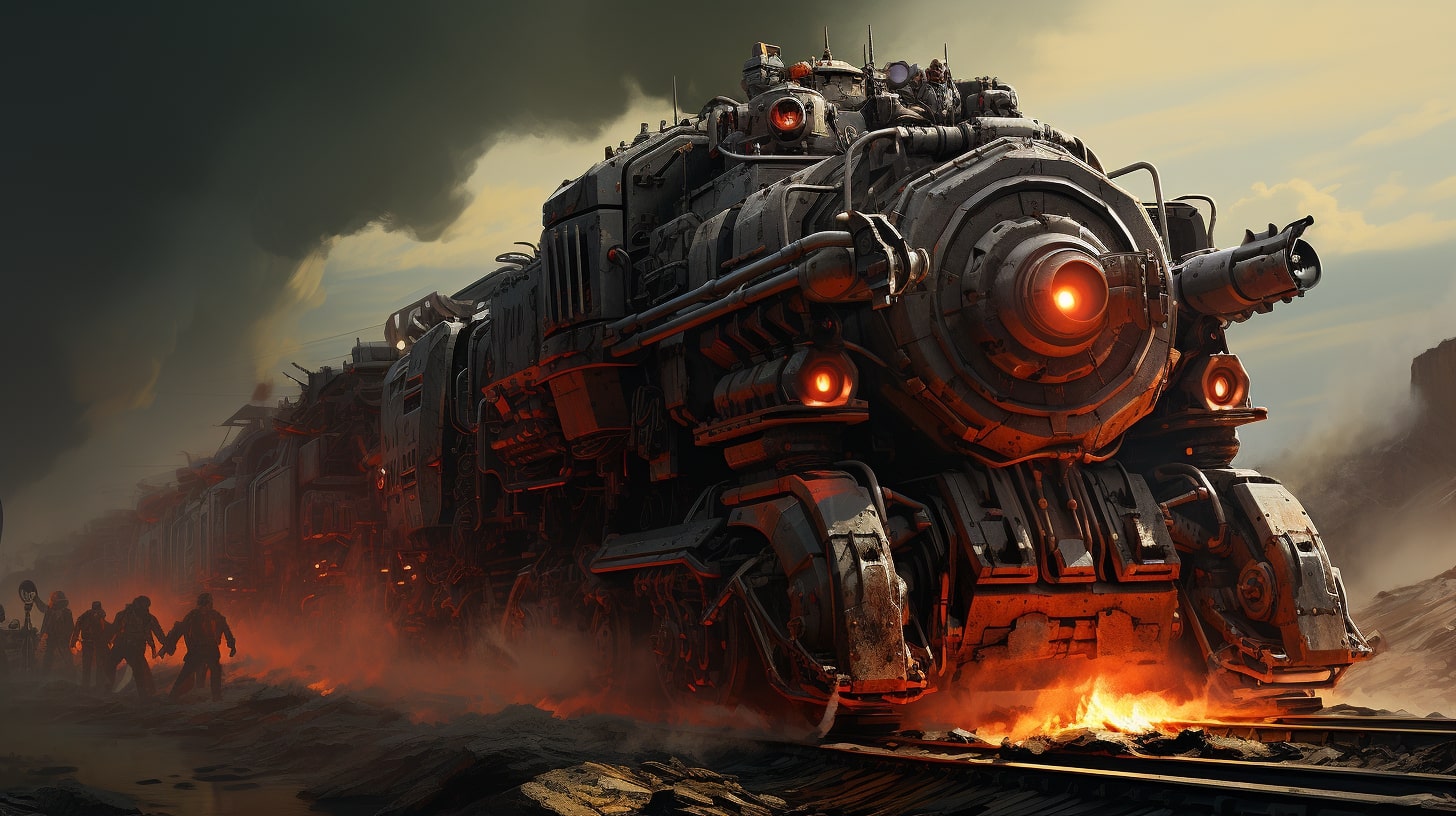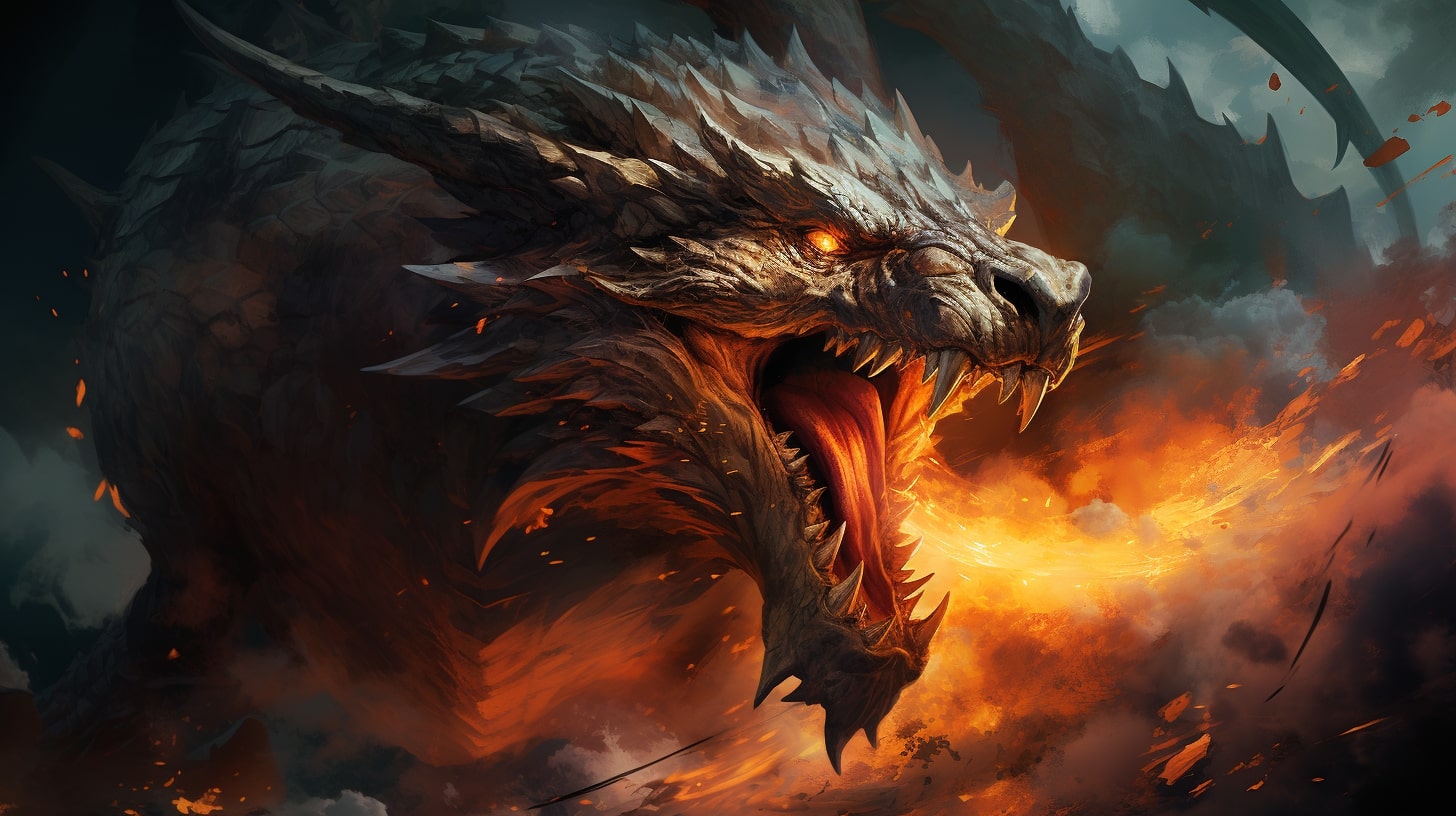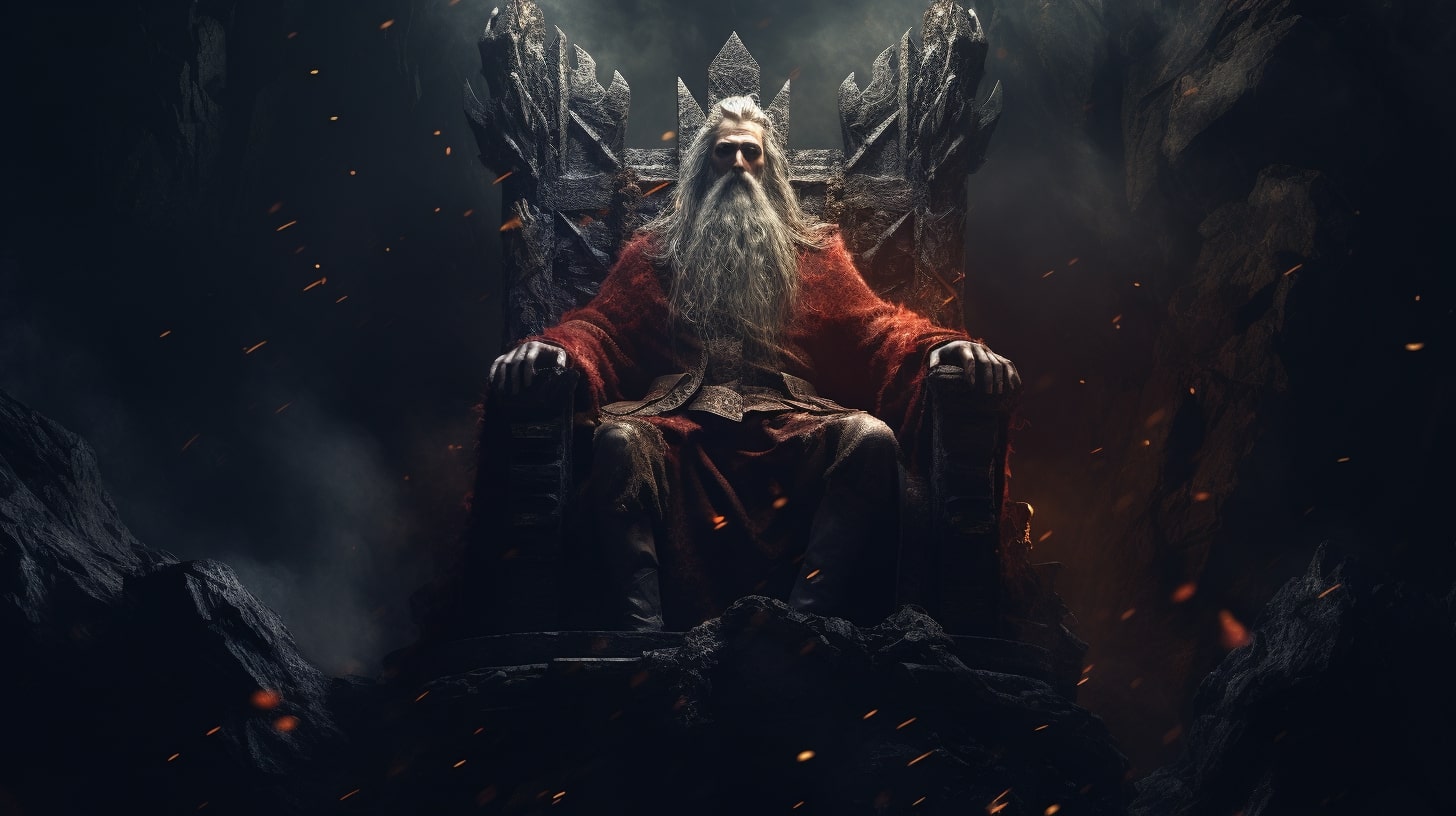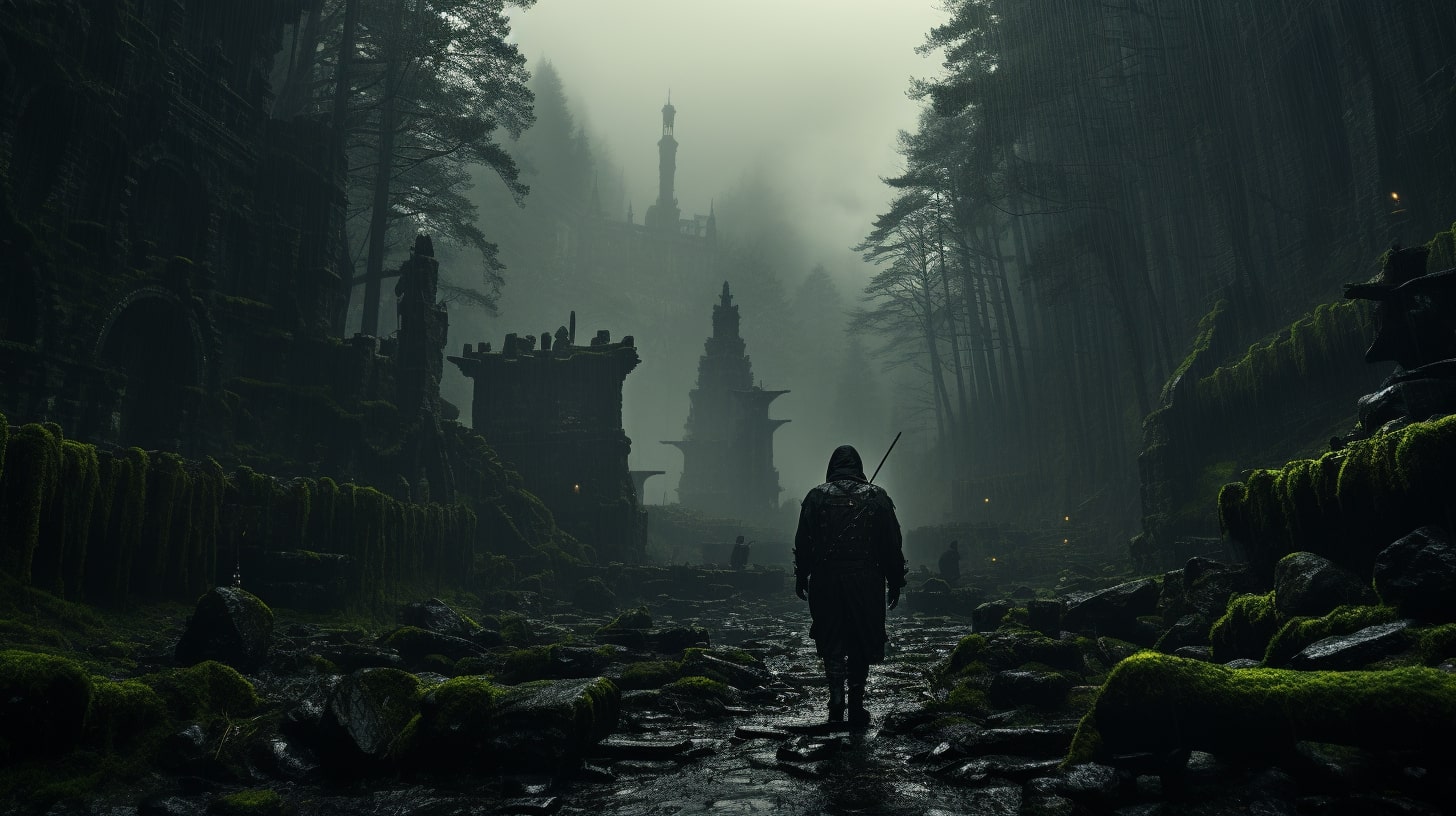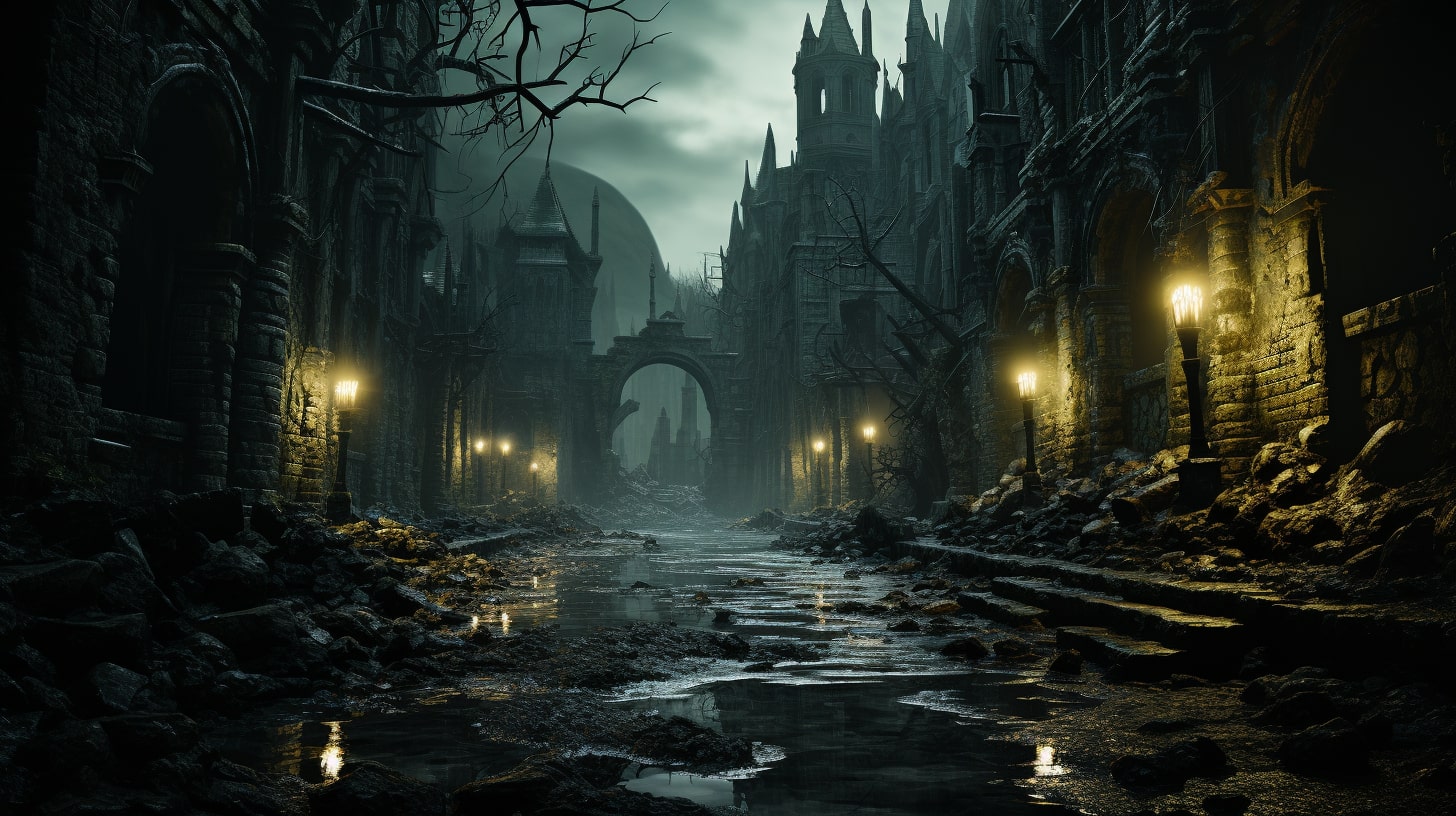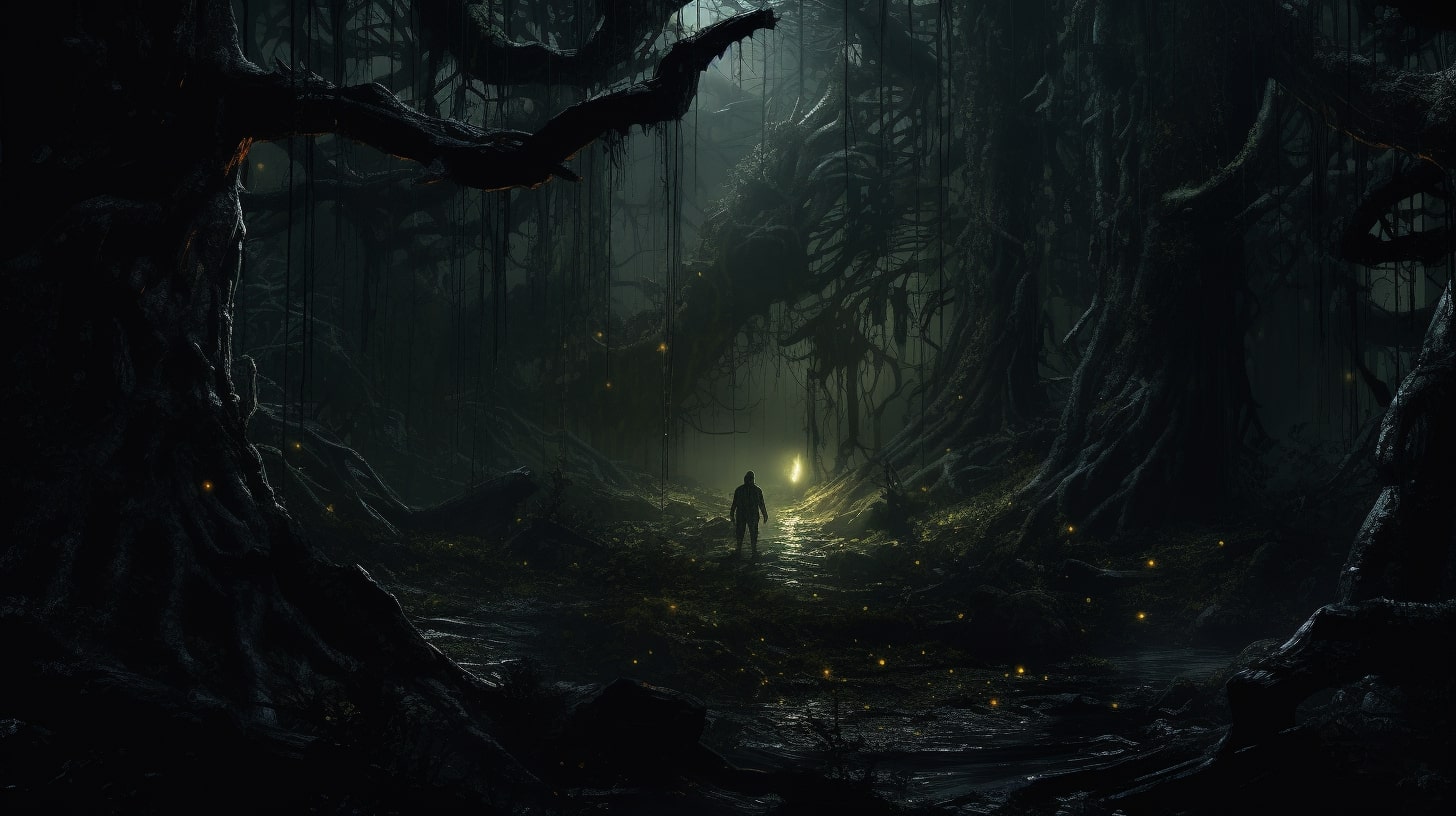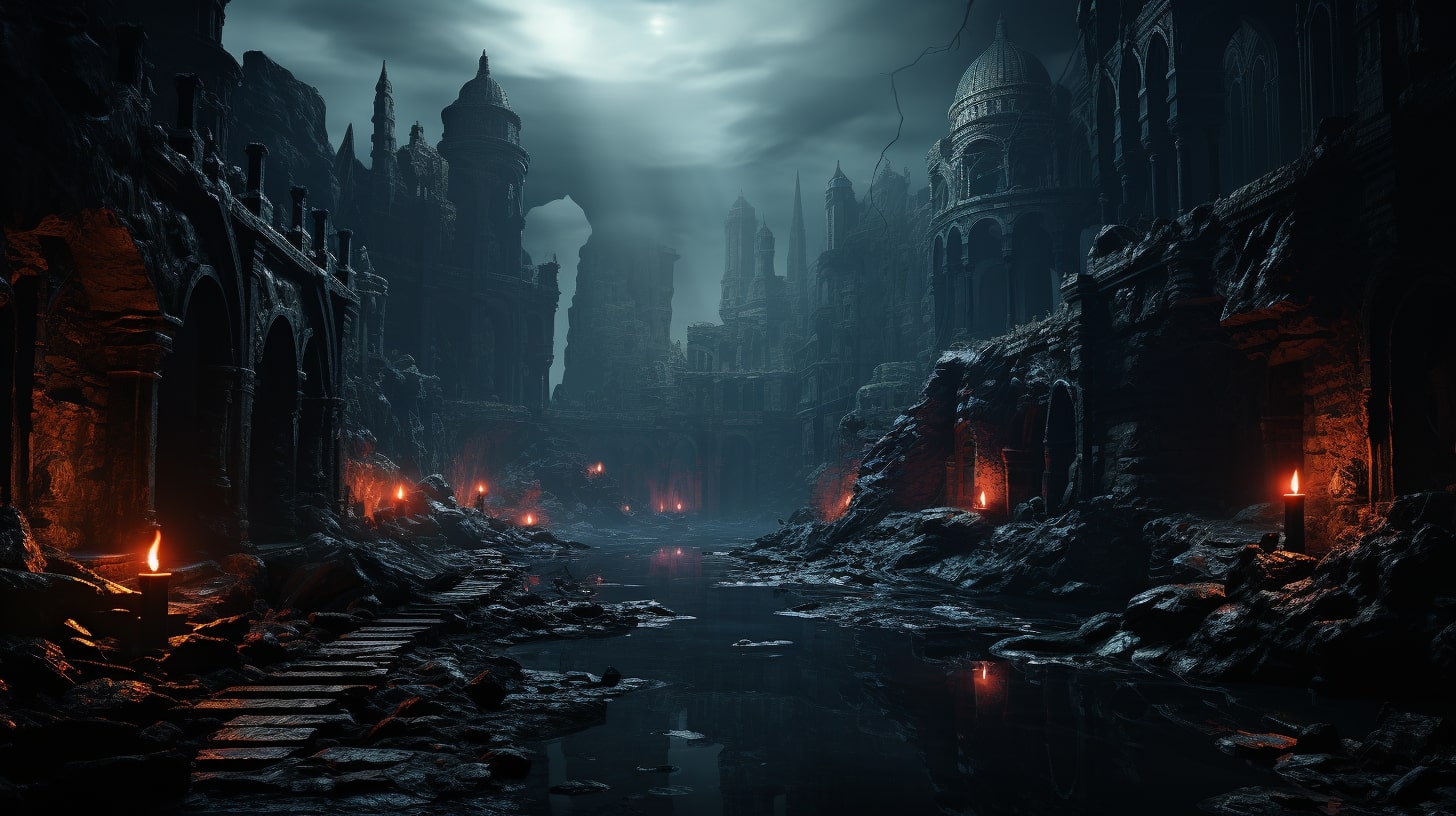The Importance of Worldbuilding
In the realm of fantasy writing, worldbuilding holds immense significance. By creating immersive fictional worlds, you have the power to transport readers to extraordinary realms filled with magic, adventure, and wonder.
Worldbuilding is the key that unlocks the door to a captivating story, allowing readers to escape the bounds of reality and embark on thrilling journeys through your imagination.
One of the great aspects of worldbuilding is the myths that can be built around it. Worldbuilding mythology adds an element to your world that goes unseen, but always felt.
Creating Immersive Fictional Worlds
Through worldbuilding, you have the opportunity to construct intricate and richly detailed worlds that captivate the imagination of your readers. Whether it’s a sprawling kingdom with towering castles, a hidden realm of mystical creatures, or a dystopian future society, your world is the canvas upon which your story unfolds. Every aspect of your world, from its geography and climate to its cultures and histories, contributes to the overall immersion and believability of your story.
To embark on your worldbuilding journey, consider utilizing worldbuilding resources such as worldbuilding ideas, worldbuilding prompts, and worldbuilding maps to help inspire and guide you. These tools can provide a solid foundation for building a world that feels tangible and alive.
The Role of Worldbuilding in Fantasy Writing
In the realm of fantasy writing, worldbuilding plays a pivotal role in establishing the setting, atmosphere, and context for your story. It sets the stage for your characters’ adventures and provides them with a vibrant backdrop against which their struggles and triumphs unfold.
A well-developed world can also serve as a source of inspiration for your narrative, influencing the plot, conflicts, and themes of your story. By integrating elements of mythology into your worldbuilding, you can add depth, complexity, and a sense of history to your fictional realms. Mythology has the power to enhance worldbuilding by infusing it with timeless tales, legendary creatures, and ancient traditions. To learn more about incorporating mythology into your worldbuilding, explore our article on worldbuilding for fantasy.
Remember, the world you create is more than just a backdrop for your story; it becomes a character in its own right. It shapes the experiences and challenges your characters face, and it leaves an indelible impression on your readers. So dive into the worldbuilding process with enthusiasm, curiosity, and a touch of magic. Let your imagination run wild and craft a world that will transport your readers to extraordinary realms they’ll never want to leave.
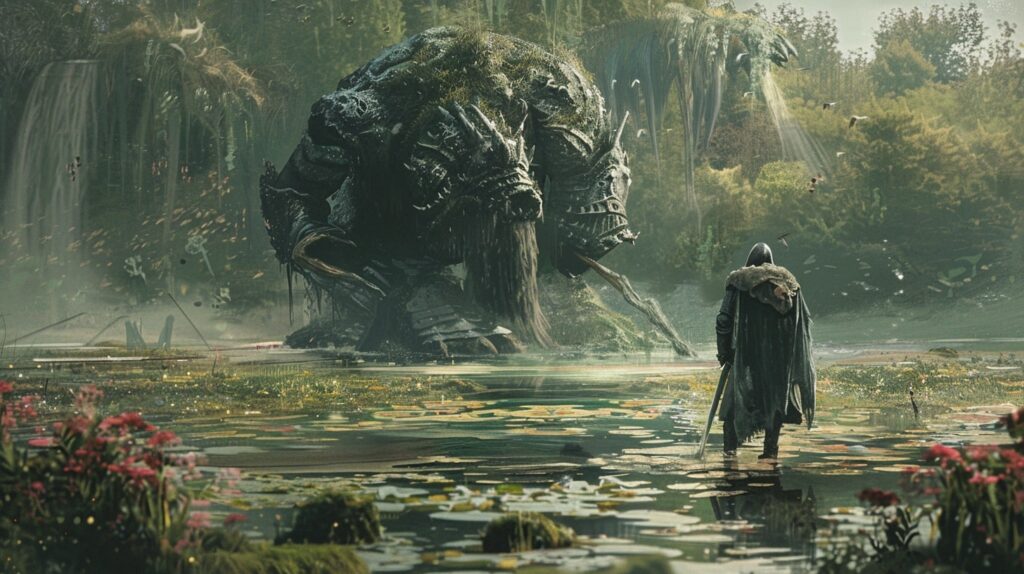
Worldbuilding Mythology: How to Tap Into It
To truly enhance your worldbuilding, incorporating mythology into your fictional worlds can add depth, richness, and a sense of history. Mythology serves as a wellspring of inspiration, offering a treasure trove of stories, creatures, and themes that can elevate your worldbuilding to new heights.
How Mythology Enhances Worldbuilding
Mythology provides a foundation for creating immersive and believable fictional worlds. By drawing from existing mythologies or creating your own, you can tap into the collective imagination and cultural heritage of humanity. This allows you to connect with readers on a deeper level, as myths and legends are ingrained in our collective consciousness.
Incorporating mythology into your worldbuilding can help you weave intricate tales, develop unique cultures, and establish a sense of authenticity. It adds layers of history and lore, giving your world a sense of depth and making it feel lived-in. By leveraging mythological elements, you can create a world that resonates with your readers and leaves a lasting impression.
Incorporating Mythological Elements
When incorporating mythology into your worldbuilding, there are various ways to infuse your fictional world with mythological elements. Here are a few ideas to consider:
1. Mythical Creatures and Beings: Introduce legendary creatures from mythologies around the world, such as dragons, phoenixes, dreadmares, or centaurs. These creatures can become integral parts of your world, shaping its ecosystems, cultures, and even conflicts.
2. Mythical Lands and Realms: Create fantastical realms inspired by mythological concepts, like an underworld, a celestial realm, or a realm of dreams. These realms can serve as unique settings for your story or as mysterious places that hold great power or danger.
3. Symbolism and Archetypes: Incorporate symbolic elements and archetypal characters from mythology to add depth to your world and its inhabitants. For example, a wise old mentor or a trickster character can play significant roles in your story, drawing inspiration from mythological figures.
4. Mythological Artifacts and Relics: Introduce powerful artifacts or relics with mythological origins that hold great significance within your world. These objects can drive the plot, serve as symbols of power, or be sought after by characters on epic quests.
By infusing your world with mythological elements, you invite readers on a captivating journey that draws upon the rich tapestry of human imagination and storytelling. Remember to research and study various mythologies to gain inspiration and insight into the diverse range of mythological themes and motifs. To explore more about worldbuilding, check out our article on worldbuilding inspiration.
In the next sections, we will delve deeper into the process of building your mythological framework and explore how you can integrate mythology into different aspects of your worldbuilding, including character development and the creation of origin myths and legends.
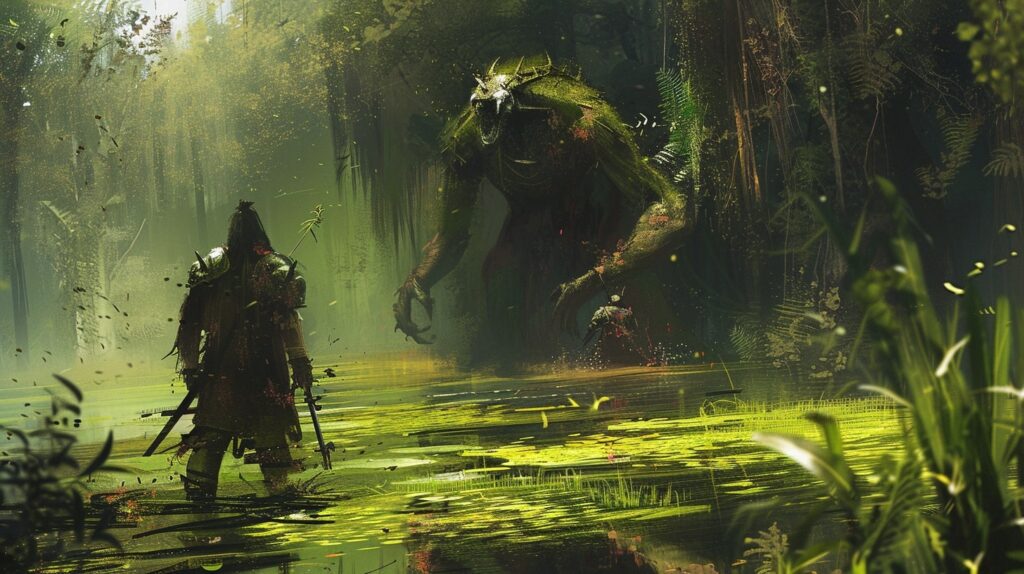
Building Your Mythological Framework
To create a solid foundation for your worldbuilding, it is important to research and study mythologies from various cultures. This process allows you to gain inspiration and insight into the rich tapestry of mythological themes that have captivated audiences for centuries.
Researching and Studying Mythologies
Begin by immersing yourself in the myths and legends of different cultures. Read books, explore online resources, and visit libraries to discover a wide range of mythological tales. Familiarize yourself with the gods, goddesses, heroes, and creatures that populate these myths. By delving into diverse mythologies, you can draw inspiration and ideas for your own worldbuilding.
When researching mythologies, it is essential to respect the cultural origins and significance of these stories. Approach them with curiosity and appreciation, recognizing their value as part of humanity’s collective storytelling heritage. By understanding the context and symbolism of mythological tales, you can weave their essence into your own fictional world.
Identifying Key Mythological Themes
As you delve into various mythologies, take note of the key mythological themes that resonate with you. These themes can serve as a foundation for your worldbuilding, adding depth and meaning to your fictional universe. Some common mythological themes include:
- Creation: Explore the origin stories of different mythologies and consider how creation myths can shape the history and cosmology of your world.
- Heroes and Villains: Examine the archetypal characters that appear in myths and legends. These heroes and villains can inspire the development of your own characters, their motivations, and their journeys.
- Motifs and Symbols: Pay attention to recurring motifs and symbols in mythological tales. These can be powerful tools for adding layers of meaning to your worldbuilding, such as using a specific animal as a symbol of power or a certain color to represent magic.
- Journeys and Quests: Consider the epic journeys and quests undertaken by mythological heroes. These can provide a framework for your own characters’ adventures and challenges.
- Morality and Ethics: Explore the moral dilemmas and ethical choices presented in myths. These can be translated into the conflicts and choices faced by characters in your world.
By identifying and incorporating key mythological themes into your worldbuilding, you can create a rich and immersive fictional universe that resonates with readers. Remember to adapt and reinterpret these themes in a way that is unique to your own story, while still honoring the underlying cultural significance.
As you progress in your worldbuilding journey, continue to explore and expand your knowledge of mythologies. The more you delve into the vast tapestry of myths and legends, the more resources you will have at your disposal to create a compelling and captivating world for your readers to explore.
Integrating Mythology into Worldbuilding
Incorporating mythology into your worldbuilding adds depth and intrigue to your fictional universe. By creating mythical creatures and beings as well as designing mythical lands and realms, you can transport your readers into a captivating world filled with wonder and imagination.
Creating Mythical Creatures and Beings
One of the most exciting aspects of worldbuilding with mythology is the opportunity to introduce unique and fascinating creatures and beings. These entities can range from majestic dragons to mischievous fairies or even enigmatic gods and goddesses. By drawing inspiration from various mythologies, you can infuse your world with a rich tapestry of fantastical characters.
Consider researching mythological creatures from different cultures and adapt them to suit your world’s narrative. Create your own interpretations of these creatures, giving them distinct characteristics and roles within your story. Whether they are benevolent protectors or formidable adversaries, these mythical beings will contribute to the richness of your world.
To help you get started, here’s an example table showcasing a few mythological creatures and their characteristics:
| Creature | Description |
|---|---|
| Griffin | A legendary creature with the body of a lion and wings |
| Phoenix | A bird that is cyclically reborn from its own ashes |
| Centaur | A creature with the upper body of a human and lower body of a horse |
| Siren | Enchanting beings with captivating voices |
| Kraken | A colossal sea monster capable of causing havoc |
Designing Mythical Lands and Realms
To immerse readers in a truly captivating world, consider designing mythical lands and realms that come alive with vivid descriptions and unique characteristics. These fantastical settings can be inspired by mythological depictions of otherworldly places or be entirely of your own creation.
Think about the geography, climate, and cultural influences of these mythical lands. Are they lush and vibrant, or desolate and mysterious? Are they inhabited by mystical creatures or powerful deities? By incorporating elements of mythology into the creation of these lands, you can infuse them with a sense of grandeur and enchantment.
When describing these mythical lands, use sensory language to evoke vivid imagery in the minds of your readers. Paint a picture of towering mountains, cascading waterfalls, sprawling forests, or ethereal gardens. By immersing your readers in these mythical realms, you transport them into a world where imagination knows no bounds.
Remember, the integration of mythology into your worldbuilding process should be a creative endeavor. It allows you to explore the depths of imagination and craft a world that is truly unique and captivating. By creating mythical creatures and beings as well as designing mythical lands and realms, you unlock the secrets of successful worldbuilding.
Using Mythological Archetypes
In the realm of worldbuilding, mythological archetypes play a significant role in shaping the characters that inhabit your fictional world. By drawing inspiration from these archetypes, you can create memorable and compelling heroic and villainous characters that resonate with your readers.
Developing Heroic and Villainous Characters
When developing heroic characters, you can look to mythological archetypes such as the hero, the mentor, and the trickster for inspiration. The hero archetype embodies courage, resilience, and the determination to overcome obstacles. They often embark on a journey or quest, facing challenges and transforming along the way. The mentor archetype guides and supports the hero, providing wisdom and guidance. The trickster archetype adds an element of unpredictability and mischief, injecting humor and complexity into the hero’s journey.
On the other hand, crafting compelling villainous characters involves exploring archetypes such as the villain, the anti-hero, and the shadow. The villain archetype embodies malevolence, creating conflict and opposition for the hero. They may have their own motivations and justifications for their actions, adding depth to their character. The anti-hero archetype blurs the lines between hero and villain, possessing both heroic and morally ambiguous qualities. The shadow archetype represents the darker side of a character’s personality, often mirroring their fears and insecurities.
Exploring Character Motivations and Journeys
Understanding the motivations and inner journeys of your characters is crucial for engaging storytelling. By infusing your characters with mythological archetypes, you can tap into universal themes and create relatable struggles. Consider the hero’s call to adventure, their initiation into a new world, and the challenges they must overcome to achieve their goals. Delve into the mentor’s guidance and wisdom, as well as the trickster’s role in testing and shaping the hero.
For your villainous characters, explore their desires, fears, and the events that led them down their dark path. Unveil their complex motivations and the conflicts they face, both internally and externally. The anti-hero’s journey often involves balancing conflicting values and making difficult choices. Dive into the character’s internal struggles and their transformation over the course of the story.
By utilizing mythological archetypes, you can add depth and complexity to your characters, making them more compelling and relatable to your readers. Explore the various facets of heroic and villainous archetypes, infusing them with unique traits and motivations that suit the world you’re building. For more insights on worldbuilding and character development, check out our articles on worldbuilding for writers and worldbuilding characters.
Adding Depth with Mythological Lore
To truly enhance your worldbuilding, incorporating mythological lore can add depth and richness to your fictional world. By creating origin myths and legends and establishing mythological rituals and traditions, you can immerse your readers in a captivating and believable world.
Creating Origin Myths and Legends
Origin myths and legends provide a sense of history and explain the foundations of your world. These stories can revolve around the creation of the universe, the birth of gods or powerful beings, and the origins of different races or civilizations within your world.
Origin myths and legends can be woven into the fabric of your world, influencing the beliefs, values, and behaviors of the characters within it. They can shape the way societies are structured, the relationships between different groups, and even impact the motivations and conflicts of your characters.
Consider researching and studying existing mythologies to gain inspiration and insights into how these stories are structured and the roles they play within cultures. By infusing your world with unique and compelling origin myths and legends, you can create a sense of wonder and intrigue for your readers.
Establishing Mythological Rituals and Traditions
In addition to origin myths and legends, another way to add depth to your world is by establishing mythological rituals and traditions. These can be religious or cultural practices that are deeply rooted in the beliefs and values of your fictional societies.
Rituals and traditions can encompass various aspects of life, such as birth, coming of age, marriage, and death. They can be performed to honor gods or mythical beings, commemorate important events, or seek blessings and protection. By incorporating these rituals and traditions, you can showcase the unique customs and practices of different cultures within your world.
Consider the significance of rituals and traditions in shaping the identities and social structures of your fictional societies. How do these practices contribute to the cohesion of communities or create divisions between different groups? How do characters interact with these rituals and traditions, and how do they impact their personal journeys?
By carefully crafting origin myths and legends and mythological rituals and traditions, you can add depth and authenticity to your worldbuilding. These elements have the power to captivate your readers and make your fictional world feel alive and vibrant. Remember to explore our worldbuilding resources for more inspiration and guidance on creating immersive and compelling worlds.

